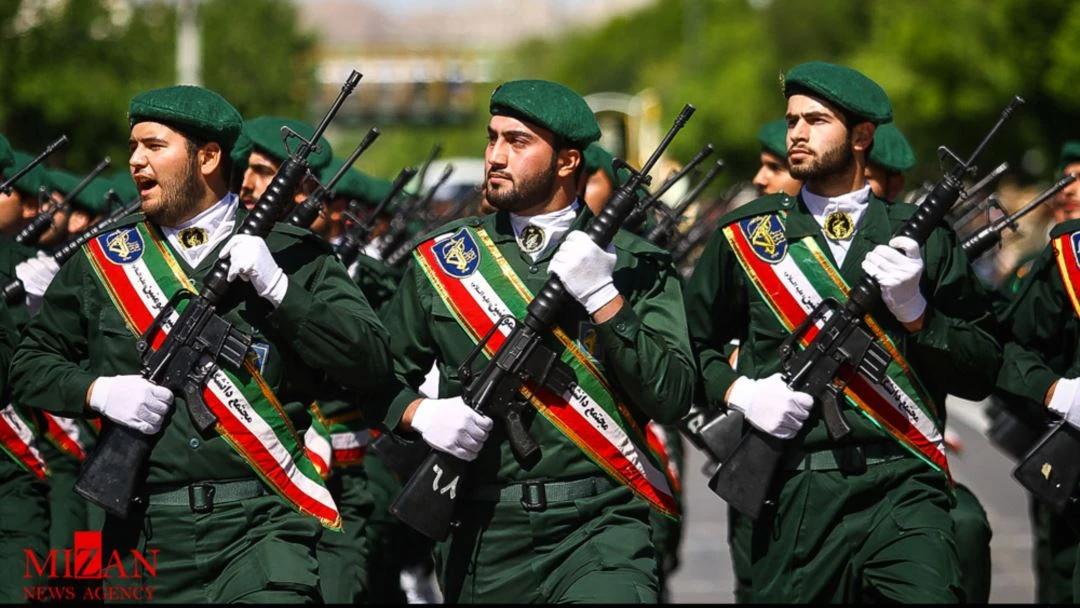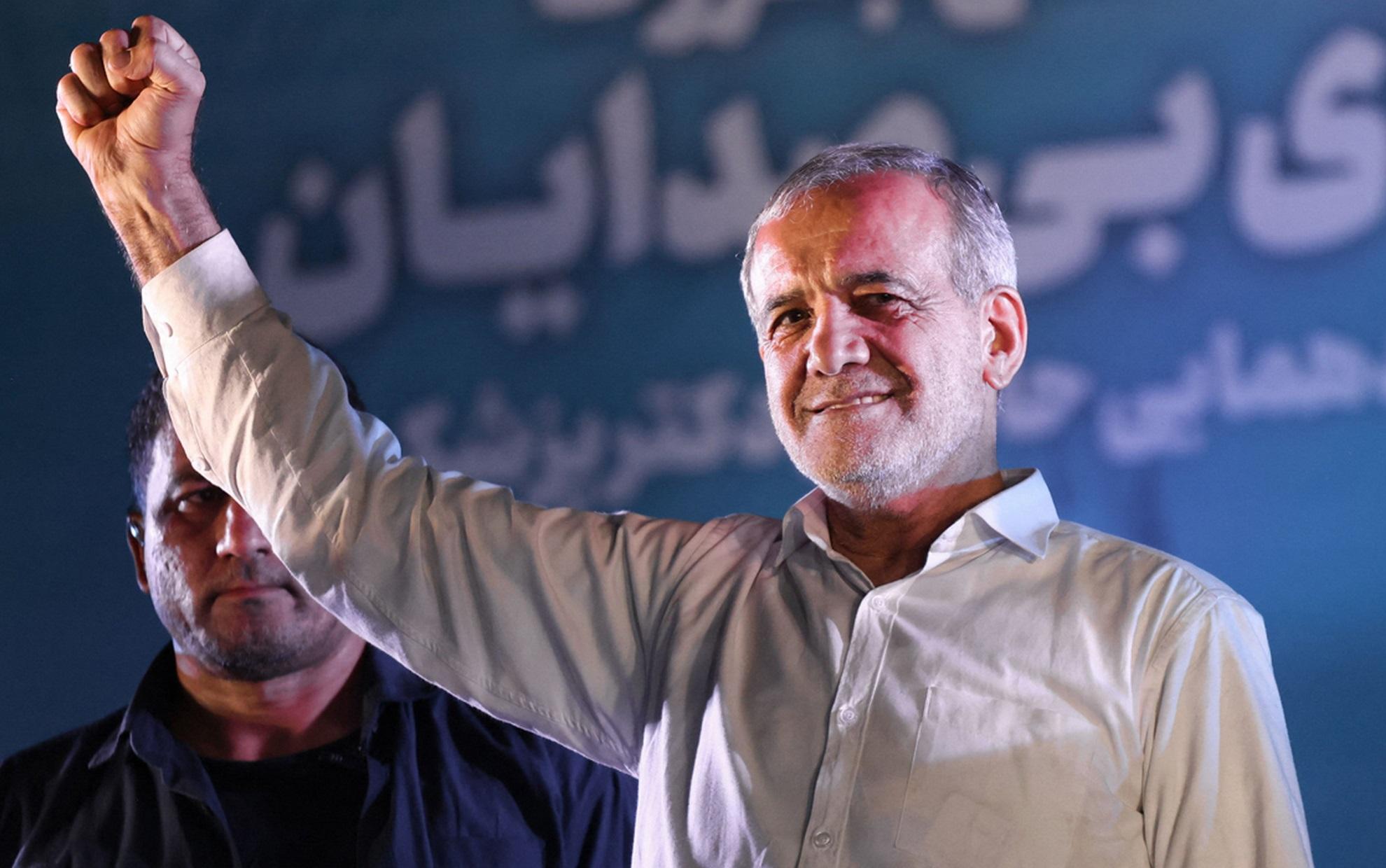Iranian president's victory reflects struggle over future leadership Political landscape shifts
When new elections were announced following the death of Iranian President Ebrahim Raisi in a plane crash, international experts widely predicted Saeed Jalili would be the next president. However, they were mistaken.
True power in Iran rests with Supreme Leader Ali Khamenei, who governs for life, along with his administration and the Islamic Revolutionary Guard Corps (IRGC), a distinct military force comprised of the most devout soldiers and officers.
The IRGC controls approximately half of Iran's economy, while the Supreme Leader oversees funds equivalent to about a quarter of the country’s GDP, roughly $100 billion. These factors are central to Iran’s political and economic framework. The president, functioning essentially as a prime minister, manages ministries related to the economy, infrastructure, and diplomacy but remains reliant on the Supreme Leader for ultimate authority in these areas.

Given that the country's leadership has the authority to disqualify presidential candidates, it is unclear why the elections garnered so much attention. The crux of the matter lies in Iran’s complex political situation.
On one hand, with the Supreme Leader being 85 years old, a transition of supreme power is likely in the near future. However, the specifics of how this transition will occur remain uncertain.
The last transition of supreme power occurred 35 years ago, following the death of the Islamic Republic of Iran's founding father, Ayatollah Ruhollah Khomeini. At that time, Ali Khamenei was selected by the Assembly of Experts through a confidential process, where the interests of security officials and various departments were pivotal.
During a period of power transition, Iran's leadership seeks maximum predictability and control. In this context, the role of the president may be less critical, with the focus more on ensuring stability and orderly succession.
Individuals like Raisi or Jalili are known for their strict adherence to the directives of the Supreme Leader and the IRGC leadership. They are conservative figures, staunchly supportive of hardline policies and maintaining strained relations with the West. Most importantly, they are prepared to fully implement the recommendations of Khamenei, who is known for his micromanagement style, and his bureaucratic apparatus.
Conversely, sociological research indicates a declining interest in the presidential elections, with voter turnout decreasing. Concurrently, social and political protests are rising in areas with lower election participation. In response to this trend, the Iranian leadership permitted Masoud Pezeshkian, a liberal reformist with independent views on several issues, to enter the race in an effort to boost engagement and interest in the elections.
The outcome was an unexpected victory for Pezeshkian, who garnered the support of a majority of those who voted—slightly less than half of the electorate. Currently, the primary focus of expert discussions is the future of Iran. Although the presidency itself is not the central issue, the impending transition of supreme power adds complexity to the situation. As internal factional struggles intensify, the role of the president could become significantly more influential.
Pezeshkian is associated with the liberal reformist faction, which has been marginalized in Iranian politics over recent years. Representatives of this faction were excluded from the previous presidential elections, and only a handful, including Pezeshkian, were permitted to run in parliamentary elections. Pezeshkian has notably criticized the persecution of women over hijab regulations, advocating for more progressive policies.
Pezeshkian secured backing from segments of Tehran's intelligentsia and youth, culminating in his victory in the city. Additionally, he advocates for renewing the nuclear deal with the West, a critical issue for Iran's economic and political stability. With approximately 60 per cent of Iranians living below the poverty line and severe inflation reaching 40 percent annually, strikes have become common in the oil and petrochemical industries, further exacerbating the country’s economic challenges.
The most concerning aspect is that these strikes are illegal and organized by labor collectives or informal groups, reflecting a growing radical potential for unrest. This mirrors the situation during the Shah's regime, when widespread worker strikes and factory occupations contributed to the 1978-1979 revolution. The current decline in living standards, rising prices, and the precarious conditions of workers facing temporary employment are key factors fueling these disturbances and highlighting deep-rooted issues within the existing system.
Djavad Salehi-Isfahani, an economist specializing in Iranian affairs, underscores that the Iranian economy cannot advance without a new nuclear deal. The decision to permit a reformer like Pezeshkian, who advocates for renewed cooperation with the West, to run in the elections may reflect this recognition.
Salehi-Isfahani points out that the new president inherits a range of economic issues that have built up over a decade of stringent US sanctions and heightened regional tensions. Investment in Iran has plummeted to a historic low of 11 per cent of GDP, and deteriorating electricity and gas infrastructure has resulted in frequent power outages. Additionally, rural-to-urban migration driven by drought has exacerbated problems with water supply and other services. The lackluster economic performance of Raisi's "revolutionary" government—endorsed by hardliners seeking to uphold the original values of the Islamic Revolution—may have led some influential conservatives to conclude that allowing a reformist leader to negotiate a new deal with the West is necessary to mitigate growing risks.

It remains uncertain whether Pezeshkian will be permitted to secure a nuclear deal with the West. However, if successful, such an achievement could enhance his influence both among the general populace and within the ruling elite.
Pezeshkian notably differs from his reformist predecessor, Hassan Rouhani, in several key ways. While Rouhani championed privatization and increasing the role of the private sector in Iran's economy, Pezeshkian advocates for greater social equality and the expansion of state-supported social services. As a heart surgeon, he is particularly focused on improving access to free medical care, an issue he is intimately familiar with. These distinctions may bolster his ability to garner support and exert influence in Iranian society.
Amidst the challenges facing Iran's state-run healthcare system, private medical services, which remain expensive and largely inaccessible, are becoming increasingly significant. Pezeshkian's emphasis on expanding social support and improving healthcare access is likely to resonate with 60 per cent of Iranians living in poverty.
Pezeshkian also enjoys substantial support from regions with significant ethnic minorities, including Azerbaijanis—who constitute about a third of Iran’s population—and Kurds, Baloch people, and Arabs. His backing from these diverse groups is not merely due to his background but also because he is seen as a champion of regional and ethnic representation in the Iranian parliament. His advocacy for greater inclusion of various nationalities in governance further strengthens his appeal to these communities.
Pezeshkian aims to boost funding for ethnic regions and enhance their representation in the government. Iranian scholar Ali Alfoneh highlights that Pezeshkian's promise of a more inclusive administration, reflecting Iran's ethnic and religious diversity, resonated strongly with voters in peripheral areas.
Pezeshkian's appeal was particularly notable in the first round among the Azerbaijani population of northwestern Iran. In the second round, his campaign capitalized on this momentum, significantly increasing voter turnout in key provinces: Ardabil, East Azerbaijan, and West Azerbaijan saw a rise of about 20%, while turnout in Kurdistan province increased from 23 per centto 29 per cent. In Khuzestan, home to a Sunni Arab majority, turnout grew from 30 per cent to 40 per cent, and in Sistan and Baluchestan, with a Sunni Baloch majority, it surged from 30% to 51 per cent.
Additionally, Pezeshkian’s respect for the religious state and the Supreme Leader, Ali Khamenei, helps maintain a degree of goodwill with Khamenei and the IRGC, balancing his reformist stance with traditional expectations.
Pezeshkian does not present himself as a secular liberal oppositionist but rather as someone who has learned from the mistakes of past reformers. He cultivates an image of a leader committed to reforming the system from within while simultaneously strengthening his influence. His approach focuses on rallying support from the social lower classes, ethnic minorities in peripheral regions, and the affluent yet conservative segments of urban populations. This strategy aims to appeal to those who seek economic improvements but are cautious about radical changes.
Although Pezeshkian may face challenges in appointing ministers, he has the opportunity to bolster his influence by appointing regional leaders, which aligns with the grassroots support that forms the basis of his political power. His efforts are expected to encounter resistance from various factions within the government who are wary of his rising influence. However, given the public expectations surrounding his presidency, Supreme Leader Ali Khamenei may find it difficult to entirely dismiss these demands.
If opposition from hostile factions successfully undermines Pezeshkian’s initiatives, it could lead to widespread frustration and protests, reminiscent of the unrest seen during President Rouhani’s term. Conversely, if Pezeshkian manages to implement his reforms effectively, he could consolidate substantial influence, positioning himself strongly as Iran approaches a transition of supreme power.
The views and opinions expressed by hired political analysts in their articles may differ from and do not always reflect the views of Caliber.Az.








